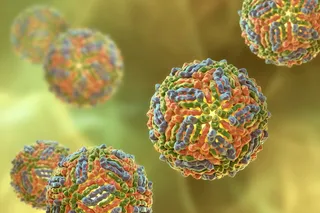In an interview airing on 60 Minutes, President Joe Biden announced that the pandemic is ending in the U.S. "We still have a problem with COVID," Biden said, "but the pandemic is over."
Though the comment seems somewhat contradictory, it captures the continuing struggle among specialists to determine where we stand with the current COVID-19 pandemic. In other words, scientists simply cannot agree whether the pandemic was a problem of the past or whether continuing cases indicate that the pandemic is far from over.
The crux of the problem is that — despite what we want — diseases are tricky to eliminate, and pandemics don't end decisively. They seldom culminate with a disease disappearing completely. Instead, they typically come to their close when a disease turns "endemic," transitioning into yet another stage of activity — albeit one with a steadier, more manageable rate of cases.
So what, exactly, does it ...















